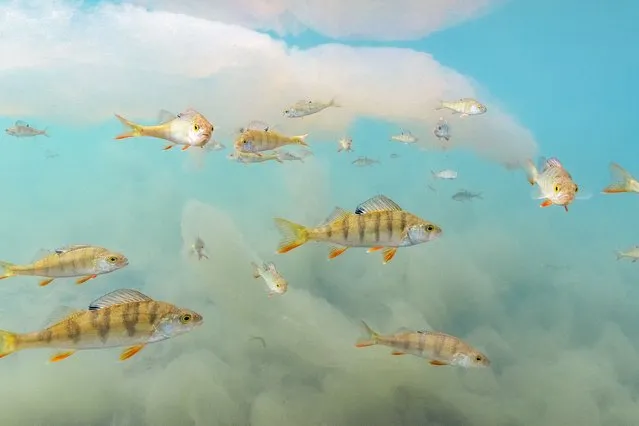
Underwater wonderland, by Tiina Törmänen, Finland. Törmänen was thrilled to meet a school of inquisitive European perch on her annual snorkel in Honkalampi lake. In the previous three years she had found only dead fish. She framed the fish flying through clouds of pink-tinged algae. Although it created a beautiful scene, excessive algal growth, a result of the changing climate and warming waters, can cause problems for aquatic wildlife as it uses up oxygen and blocks out sunlight. (Photo by Tiina Törmänen/Wildlife Photographer of the Year 2022)
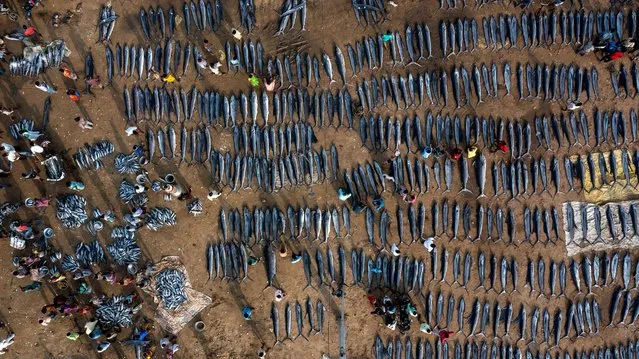
Just one day’s catch, by Srikanth Mannepuri, India. Mannepuri was shocked to see so many recently caught marlin and sailfish in a single place, in Kakinada, Andhra Pradesh. To demonstrate the scale of the fish market, he used a drone to get a bird’s-eye view. Globally, 85% of fish stocks are overexploited by humans. (Photo by Srikanth Mannepuri/Wildlife Photographer of the Year 2022)
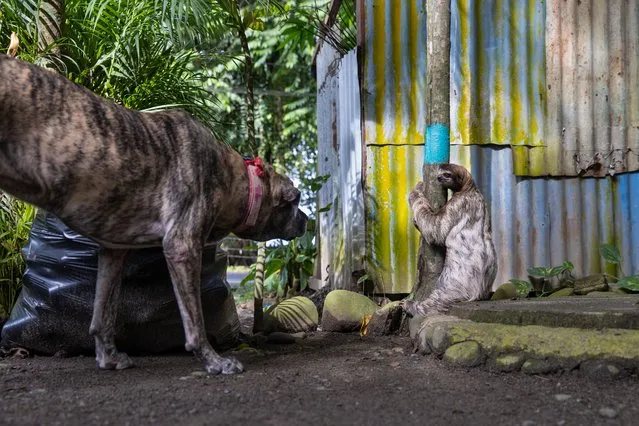
Sloth dilemma, by Suzi Eszterhas, USA. An encounter between a sloth and a dog in Puerto Viejo de Talamanca, Costa Rica. The brown-throated sloth was trying to reach a clump of trees when it met a big dog and froze. But the dog, having taken part in a training programme on sloth safety, simply sniffed at it. Sloths live in trees and rarely descend to the floor. With increasing habitat loss and the fragmentation of the forest, they are forced on perilous journeys across urbanised areas to find food, suitable habitats and mates. (Photo by Suzi Eszterhas/Wildlife Photographer of the Year 2022)
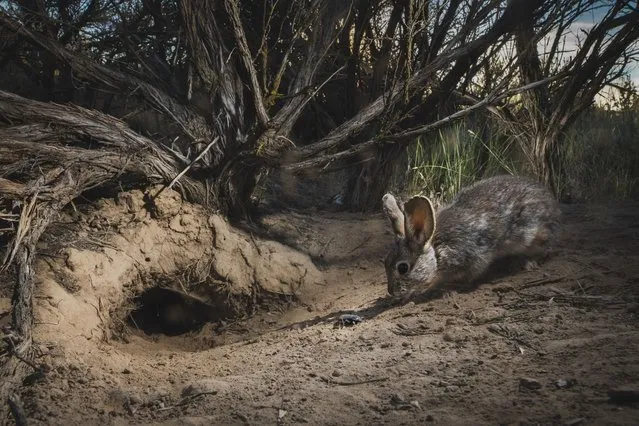
Burrow mates, by Morgan Heim, USA. Heim set up camera traps by the active burrows of pygmy rabbits in the Columbia Basin in Washington state to observe their comings and goings. She was delighted by this moment of interaction as one of the rabbits sniffed at a stink beetle that had been sheltering in its burrow. (Photo by Morgan Heim/Wildlife Photographer of the Year 2022)
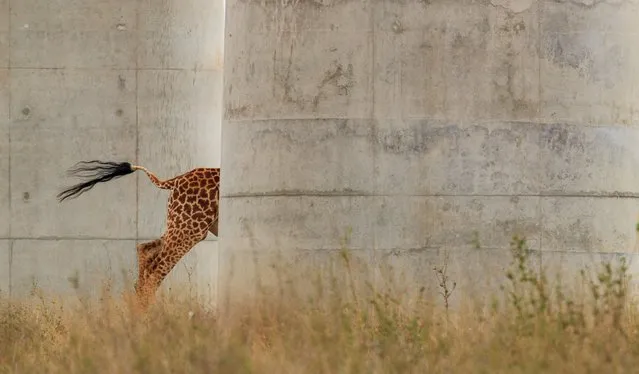
The disappearing giraffe, by Jose Fragozo, Portugal. Fragozo captures the contrast between the natural world and human infrastructure. Here a giraffe is dwarfed by giant pillars of Kenya’s new Standard Gauge railway. Though this stretch of railway running through Nairobi national park is raised on giant columns, allowing animals access beneath, this picture is symbolic of how the space for wildlife continues to be squeezed. (Photo by Jose Fragozo/Wildlife Photographer of the Year 2022)
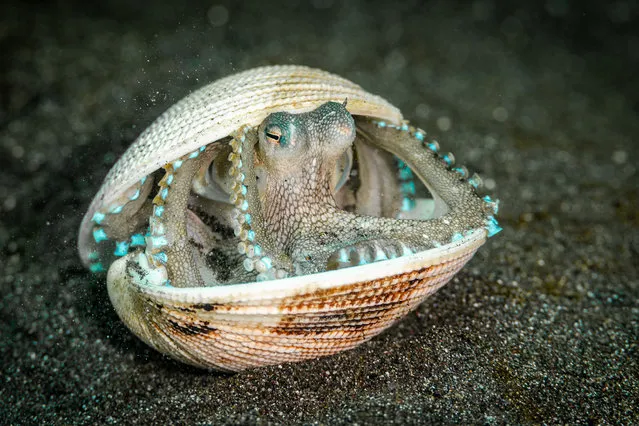
The octopus case, by Samuel Sloss, Italy/USA, 15-17 age category. A coconut octopus peeks out from its clamshell shelter. Samuel was muck diving in Indonesia when he noticed this octopus. He lowered the power of his strobe lamp so as not to distress it. The octopus shut the lid of the shell when Samuel approached but then slowly reopened it, revealing colours and coils. (Photo by Samuel Sloss/Wildlife Photographer of the Year 2022)
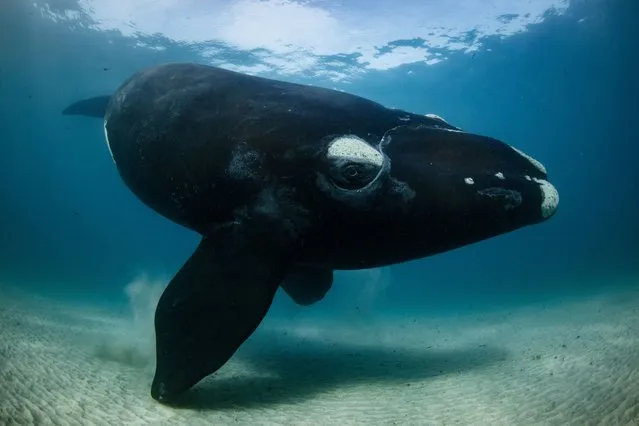
The right look, by Richard Robinson, New Zealand. While the whale calf investigated him, Robinson’s main challenge was to swim far enough away to photograph it. The encounter in Port Ross lasted 30 minutes. New Zealand’s population of southern right whales, known as tohorā in Māori, were hunted to near extinction by European whalers in the 1800s and then by Soviet whalers in the 1900s. Now protected, the population has bounced back from a small group. including just 13 breeding females, to more than 2,000 individuals. (Photo by Richard Robinson/Wildlife Photographer of the Year 2022)
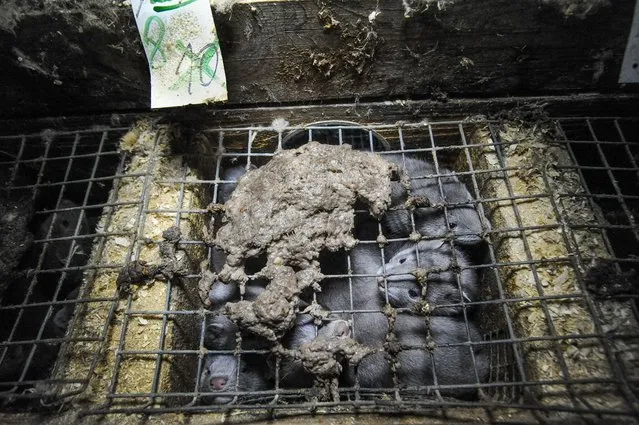
Life and death in fur farming, by Jo-Anne McArthur, Canada. American mink kits fighting for space in a small cage on a fur farm in Lindåsen, Sweden. The sign above the cramped cage indicates two kits have died. As a result of legislative changes since this photo was taken, farms now have slightly larger cages, but the animals’ standard of life remains poor. (Photo by Jo-Anne McArthur/Wildlife Photographer of the Year 2022)
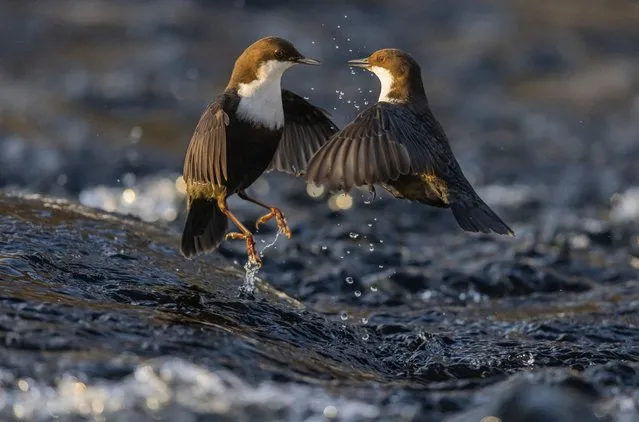
Dipper dispute by Heikki Nikki, Finland. After years of visiting the river in Kuusamo, Nikki knew every ‘dipping’ rock favoured by white-throated dippers. Picking one hidden beneath flowing water, he sat quietly on the bank and captured this fleeting moment as two birds fought over prime position. Dippers use “dipping” rocks as a launchpad to scout rivers before diving down to hunt mayfly and caddisfly larvae and small fish. (Photo by Heikki Nikki/Wildlife Photographer of the Year 2022)
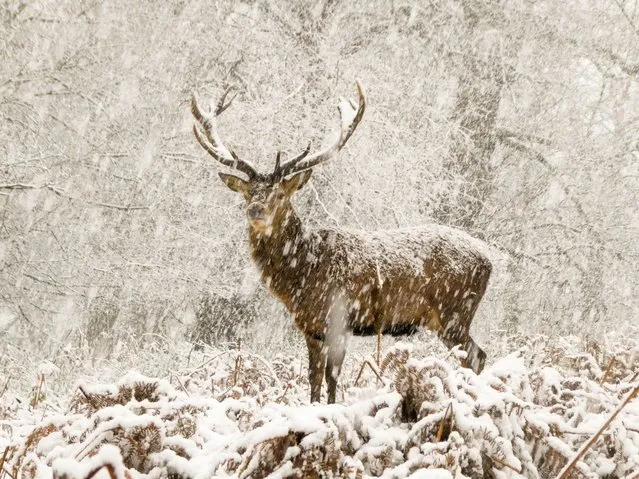
The snow stag, by Joshua Cox, UK, 10 years and under category. It had just started to snow when Joshua and his father arrived in Richmond Park, London. They followed the deer at a safe distance, and as the snow intensified one of the stags stopped. “He almost looked as if he was having a snow shower”, says Joshua. Herds of red and fallow deer have been roaming the park freely since 1637. (Photo by Joshua Cox/Wildlife Photographer of the Year 2022)
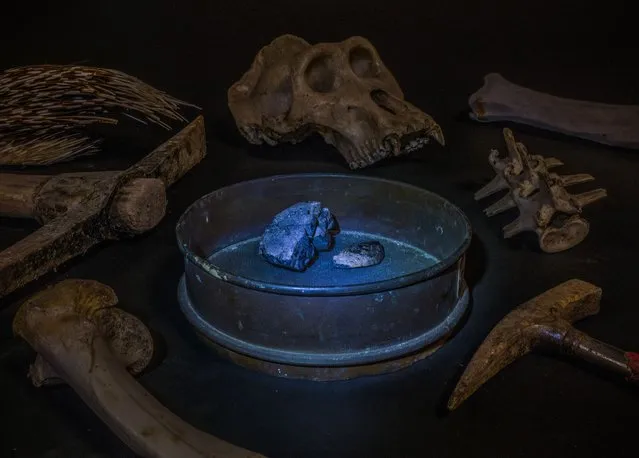
Wanted! by Britta Jaschinski, Germany/UK. Glowing blue, coltan is a component of phone and laptop batteries. Here Jaschinski surrounds it with mining tools and the remains of animals affected by the industry, all seized by customs authorities: a gorilla skull, vertebrae and leg bone, and porcupine quills. Coltan is extracted from the riverbeds of the Democratic Republic of the Congo by poorly paid miners who hunt wild animals for food. Hunting and trading wildlife threatens the future of the country’s gorillas and has led to an increased risk of viruses jumping to humans. (Photo by Britta Jaschinski/Wildlife Photographer of the Year 2022)
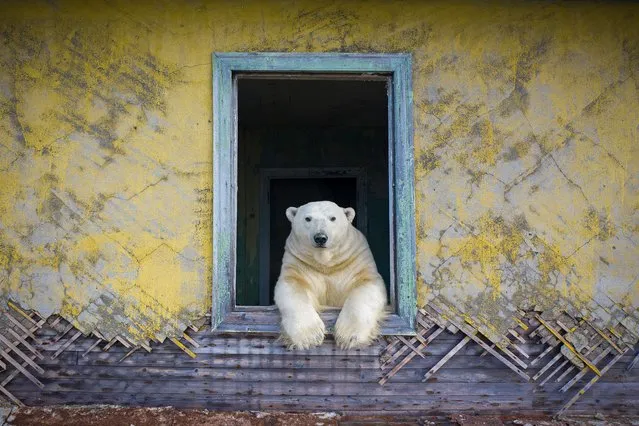
Polar frame, by Dmitry Kokh, Russia. When Kokh’s boat approached the small island of Kolyuchin in the Russian High Arctic, which had been abandoned by humans since 1992, he was surprised to spot movement in one of the houses. Binoculars revealed polar bears – more than 20 in total – exploring the ghost town. Dmitry used a low-noise drone to document them. (Photo by Dmitry Kokh/Wildlife Photographer of the Year 2022)
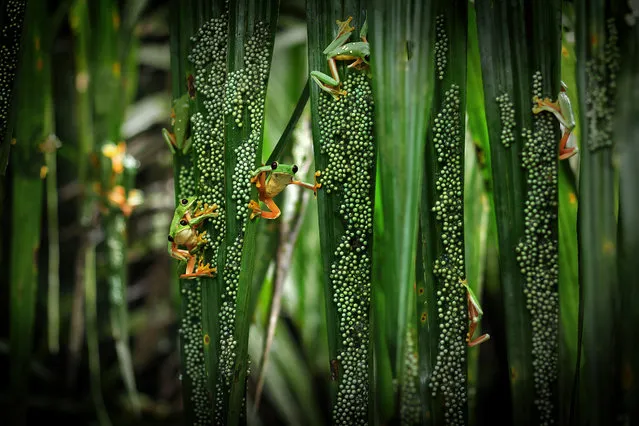
Treefrog pool party, by Brandon Güell, Costa Rica/USA. Güell waded chest-deep into murky water in the Osa peninsula where a gathering of male gliding treefrogs were calling. At dawn thousands of females arrived at the pool to mate and lay their eggs on overhanging palm fronds. Here, unmated males search for females to mate with. (Photo by Brandon Güell/Wildlife Photographer of the Year 2022)
03 Sep 2022 05:43:00,
post received
0 comments
